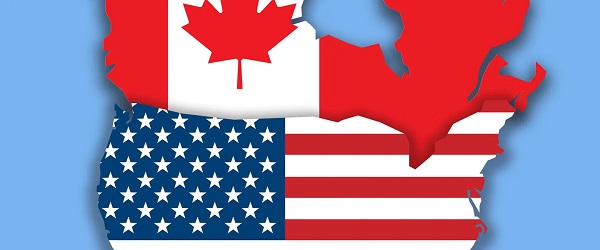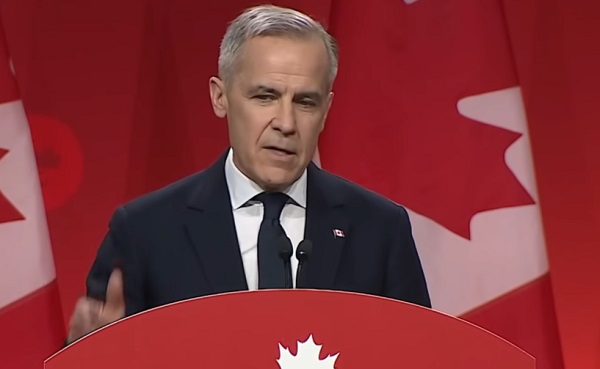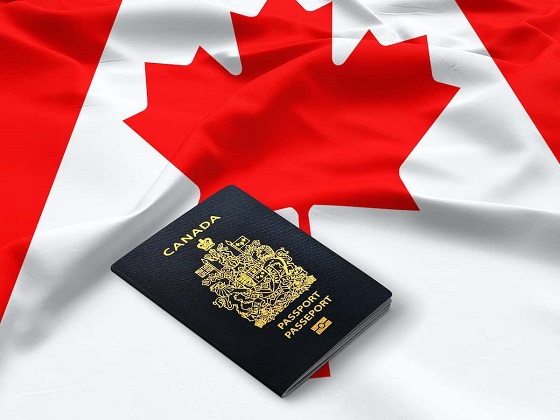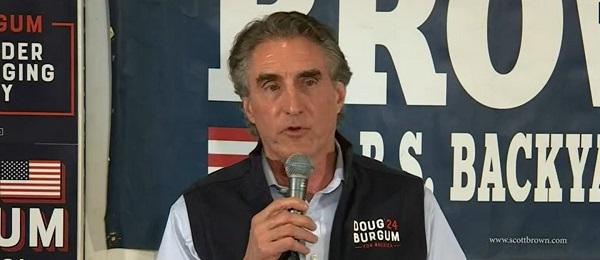Business
Disney Settles Star Wars Actress Gina Carano’s Lawsuit


From the Daily Caller News Foundation
By Hailey Gomez
Actress Gina Carano reached a settlement with Disney and Lucasfilm Thursday after filing a lawsuit against the company in 2024 following her firing from the show “The Mandalorian.”
In February 2024, Carano filed the lawsuit, alleging she had been wrongfully terminated and discriminated against. Posting a statement Thursday on X, Carano announced that the more-than-year-long legal battle had officially ended, calling the settlement the “best outcome for all parties involved” and thanking billionaire Elon Musk and her lawyers.
“I hope this brings some healing to the force,” Carano wrote. “I am humbled and grateful to God for His love and grace in this outcome. I’d like to thank you all for your unrelenting support throughout my life and career, you’ve been the heartbeat that has kept my story alive. I hope to make you proud.”
Dear Readers:
As a nonprofit, we are dependent on the generosity of our readers.
Please consider making a small donation of any amount here.
Thank you!
“I am excited to flip the page and move onto the next chapter. My desires remain in the arts, which is where I hope you will join me,” Carano added.
Carano posted her initial announcement of the lawsuit last year on X, stating that Musk would provide lawyers for her after he said he would offer legal representation to those who “had been fired from using the platform (X) for exercising your right to free speech.”
The lawsuit stemmed from Carano’s February 2021 firing from Lucasfilm’s Star Wars series “The Mandalorian.” The actress had been promptly let go from the show after “sharing a post on social media implying that being a Republican today is like being Jewish during the Holocaust,” according to The Hollywood Reporter.
At the time of her termination, Lucasfilm released a statement saying there were “no plans for her to be” employed by the company in the future.
“Gina Carano is not currently employed by Lucasfilm and there are no plans for her to be in the future. Nevertheless, her social media posts denigrating people based on their cultural and religious identities are abhorrent and unacceptable,” the statement read.
In addition to being let go from the show, Carano’s representation, United Talent Management, also dropped her. In response to the company’s statement at the time, Carano called out the “smear campaign ” against her, alleging she had been “hunted down from everything” she posted and liked on social media.
“Nothing could be further from the truth. The truth is I was being hunted down from everything I posted to every post I liked because I was not in line with the acceptable narrative of the time,” Carano wrote in 2024. “My words were consistently twisted to demonize & dehumanize me as an alt right wing extremist. It was a bullying smear campaign aimed at silencing, destroying & making an example out of me.”
While details of the settlement have not been released, a Lucasfilm spokesperson told Variety that they “look forward to identifying opportunities to work together” with Carano.
“The Walt Disney Company and Lucasfilm are pleased to announce that we have reached an agreement with Gina Carano to resolve the issues in her pending lawsuit against the companies. Ms. Carano was always well respected by her directors, co-stars and staff, and she worked hard to perfect her craft while treating her colleagues with kindness and respect. With this lawsuit concluded, we look forward to identifying opportunities to work together with Ms. Carano in the near future,” a Lucasfilm spokesperson said.
Alberta
Due to spending restraint Calgary and Edmonton spend significantly less per person than Alberta’s highest-spending municipalities

From the Fraser Institute
The per-person municipal government spending levels in Calgary and Edmonton—Alberta’s largest and most populous cities—are near the average
spending level of the province’s major municipalities, finds a new study by the Fraser Institute, an independent, non-partisan Canadian public policy think-tank.
“While there’s always room for improvement, the municipal governments in Calgary and Edmonton have done a better job at restraining spending than many other municipalities in Alberta,” said Austin Thompson, senior policy analyst at the Fraser Institute and author of Comparing Per-Person Expenditure and Revenue in Major Albertan Municipalities, 2009-2023.
According to the study, which compares the finances of 25 Alberta municipalities, in 2023 (the latest year of comparable data), Edmonton ($3,241) and Calgary ($3,144) spent close to the per-person spending average ($3,239) among the 25 municipalities, and significantly less than the highest spenders, which include Grande Prairie County ($5,413), Red Deer County ($4,619) and Lethbridge ($4,423).
Subsequently, in terms of per-person spending, Edmonton ranked 12th highest and Calgary ranked 13th highest.
Moreover, despite significant population growth, both cities restrained spending. From 2009 to 2023, Edmonton’s population grew by 38.2 per cent and Calgary’s population grew by 33.7 per cent, yet per-person spending (after adjusting for inflation) grew by 4.8 per cent in Edmonton and 2.1 per cent in Calgary.
“It’s ultimately up to Albertans to decide if they get good value for their municipal tax dollars, but it helps to compare spending levels among municipalities across the province,” said Jake Fuss, director of fiscal policy at the Fraser Institute.
Municipal government spending per person in Alberta (2023)
Municipality spending per person rank of 25
Grande Prairie County $5,413 1
Red Deer County $4,619 2
Lethbridge $4,423 3
Canmore $4,154 4
Strathcona County $4,106 5
Red Deer $3,788 6
Cold Lake $3,646 7
Leduc $3,452 8
Rocky View County $3,419 9
Grande Prairie $3,342 10
Fort Saskatchewan $3,259 11
Edmonton $3,241 12
Calgary $3,144 13
Parkland County $3,141 14
St. Albert $3,129 15
Sylvan Lake $2,859 16
Spruce Grove $2,760 17
Camrose $2,744 18
Stony Plain $2,695 19
Beaumont $2,626 20
Foothills County $2,570 21
Okotoks $2,456 22
Airdrie $2,187 23
Cochrane $2,142 24
Chestermere $1,652 25
Municipal government average $3,239
Note: This ranking excludes Medicine Hat due to its unique status as the only Alberta municipality operating both an electricity and natural gas utility. Further details are available in the study.
Comparing Per-Person Expenditure and Revenue in Major Albertan Municipalities, 2009–2023
- This study found substantial variation in the per-person expenditure and revenue of 26 major Albertan municipalities between 2009 and 2023.
- On average, inflation-adjusted per-person spending increased by 12.9% across the studied Albertan municipalities, rising from $3,001 in 2009 to $3,389 in 2023.
- Medicine Hat had the highest per-person municipal spending in 2023 at $7,132. The next highest spenders in 2023 were Grande Prairie County ($5,413) and Red Deer County ($4,619).
- Chestermere recorded the lowest per-person spending in 2023 at $1,652, followed by Cochrane ($2,142) and Airdrie ($2,187).
- Municipal expenditure grew faster than population growth and inflation from 2009 to 2023 for 21 of the 26 municipalities in the study. Five municipalities were able to reduce their inflation-adjusted per-person spending: Chestermere (-37.6%), Cochrane (-15.9%), Camrose (-13.2%), Airdrie (-2.1%), and Foothills County (-2.0%).
- From 2009 to 2023, average inflation-adjusted per-person revenue decreased by 1.9% across the studied municipalities, falling from $4,007 in 2009 to $3,933 in 2023.
- Medicine Hat had the highest per-person municipal revenue in 2023 at $8,081, followed by Canmore ($6,317) and Grande Prairie County ($5,530).
- Chestermere had the lowest revenue per person in 2023 at $1,939, followed by Beaumont ($2,498) and Foothills County ($2,583).
Business
Canada falls further behind U.S. in race to attract top talent

From the Fraser Institute
By Jake Fuss
The United States Congress recently passed President Donald Trump’s “Big Beautiful Bill,” which among things extended and made permanent the income tax rate reductions and revised tax brackets first implemented in the 2017 Tax Cuts and Jobs Act. This should raise alarm bells for policymakers north of the border as Canada will continue to have uncompetitive personal income tax rates compared to our American counterparts, and fall even farther behind in the race to attract entrepreneurs, professionals, investors and top talent.
Jurisdictions around the world compete to attract and retain top talent including entrepreneurs, engineers and doctors, who contribute significantly to the economy. While taxes are one of many factors these professionals consider when deciding where to live and work, jurisdictions with relatively low taxes generally enjoy a competitive edge in attracting these individuals.
According to research, taxes have the largest effect on mobility for high-skilled individuals. For example, relatively high personal income tax (PIT) rates in one jurisdiction incentivize workers to reduce their tax burden by relocating to a lower tax jurisdiction. This creates competition between jurisdictions, as the lowest tax jurisdictions are typically more successful at attracting and retaining professionals, business owners and entrepreneurs.
Indeed, according to Moretti and Wilson (2017), the number of “star” scientists in a state increases by 0.4 per cent annually if the after-tax income in that state increases by 1 per cent due to a reduction in PIT rates. Put differently, high-income scientists are acutely sensitive to personal income taxes and make decisions about where to work in part based on the level of taxation in a given jurisdiction. Similarly, Agrawal and Feremny (2018) found workers in finance, real estate and health care are more sensitive to taxes and more likely to migrate than other professionals.
Research from Akcigit et al. (2015) similarly discovered “superstar” inventors are significantly affected by top tax rates when deciding where to locate. Another study (Iqbal, 2000) on international mobility examined the exodus of Canadian professionals to the U.S. and determined that high-skilled Canadians respond strongly to tax rates—specifically that a “1 percent increase in the existing tax gap (measured by the ratio of total tax revenue to GDP) can push 2 percent more Canadians toward the United States.”
The effect also shows up in international professional sports. Henrik Kleven and his colleagues (2013) examined data on European soccer players and found countries with low taxes attract more “high ability players” that have high rates of compensation. Among NHL fans and pundits, there’s been recent discussion about the Florida Panthers having an advantage in attracting the most talented hockey players because the players do not pay state-level income taxes.
Florida certainly has wonderful beach weather and other luxuries, but its advantage in tax rates give professional hockey teams such as the Panthers and Tampa Bay Lightning a competitive edge in recruiting top talent. Big names such as Sam Bennett, Aaron Ekblad and Brad Marchand recently re-upped with the Panthers on bargain contracts, in part due to relatively low tax rates. Another big name, Mitch Marner, left Toronto this summer for greener pastures and substantially lower taxes (with sunny weather) in Nevada by signing a lucrative eight-year contract with the Las Vegas Golden Knights.
Moreover, five of the last six Stanley Cup-winning teams have come from U.S. states that do not impose state level income taxes (the Colorado Avalanche being the only exception). And again, although taxes are not the sole factor in any player’s career decisions, they are undoubtedly a key reason why these teams successfully manage the salary cap and build the best possible roster.
Why is this relevant for Canada?
Our personal income tax (PIT) rates are uncompetitive compared to other advanced countries that we directly compete with for talented people, particularly the U.S. Among 38 countries within the Organization for Economic Cooperation and Development (OECD), Canada’s personal income tax system is ranked the 8th-least competitive. And Canada’s top combined (federal and provincial) PIT rate was the fifth-highest among those same 38 high-income countries in 2024 as illustrated in the chart below. The country’s combined PIT rate is higher than in countries such as Australia (17th), the United Kingdom (20th) and the U.S. (23rd). Again, this makes Canada less attractive to professionals, entrepreneurs and business owners who drive innovation, investment and private-sector job creation—all things fundamental to the economy.
Over the last decade, tax hikes at the federal and provincial levels have increased top PIT rates in every province. For example, the Trudeau government in 2015 raised the top federal PIT rate from 29 per cent to 33 per cent. Provinces such as Alberta, British Columbia, and Newfoundland and Labrador followed suit.
The Carney government has shown little interest in correcting this problem. While the prime minister cancelled Trudeau’s planned capital gains tax hike, Prime Minister Carney has done little else to attract or retain top talent, despite the recent change to the bottom federal PIT rate from 15 per cent to 14 per cent on income below $57,375. While this move may slightly help improve Canada’s competitiveness for lower- and lower-middle-income workers, it does almost nothing to make the country more attractive to doctors, scientists, engineers and entrepreneurs (and yes, athletes).
When Trump’s Big Beautiful Bill helped solidify the U.S. advantage, it exacerbated Canada’s competitiveness problem. If we compare PIT rates in the 10 Canadian provinces to the 50 U.S. states and the District of Columbia, the scale of our problem becomes apparent (see second chart below). Specifically, when ranking the top combined (federal and provincial/state) PIT rates in 2025, Canadian provinces hold nine of the top 10 highest rates among the 61 North American jurisdictions. Saskatchewan (at 15th highest) is the only province to escape the top 10.
Newfoundland and Labrador has the highest top PIT rate (54.80 per cent) among Canadian and U.S. jurisdictions followed by Nova Scotia (54.00 per cent), Ontario (53.53 per cent), Quebec (53.31 per cent) and New Brunswick (52.50 per cent) compared to top PIT rates as low as 37.00 per cent in Texas, Florida, Nevada, Washington and Tennessee, which impose no state-level personal income taxes.
In addition to the rate differences, there are also differences in income thresholds. For instance, in Ontario the top combined PIT rate (53.53 per cent) kicks in at C$253,414 compared to C$1,384,538 in California, a notorious high-tax state. That difference in the income threshold matters for professionals, business owners and entrepreneurs when deciding where to live.
In addition to top earners, Canada’s PIT rates are also uncompetitive at other income levels. At C$150,000, Canadians in all 10 provinces face higher PIT rates than Americans in every U.S. state (see chart below), with the highest rates in Quebec (47.46 per cent), Prince Edward Island (45.00 per cent) and Ontario (44.97 per cent). While Albertans enjoy the lowest rate (36.00) in Canada, it’s still higher than in California (33.30 per cent). And at C$150,000, nine U.S. states have combined (federal and state) income tax rates at 24.0 per cent.
If we move down the income ladder to C$75,000 (see chart below), Canadian provinces hold nine of the top 10 highest PIT rates, starting with Nova Scotia (37.17 per cent), P.E.I. (37.10 per cent) and Quebec (36.12 per cent). Americans living in geographically similar states such as New Hampshire (22.00 per cent), Vermont (28.60 per cent) and Maine (28.75 per cent) all face significantly lower PIT rates than their Canadian counterparts in the Atlantic region. Oregon (30.75 per cent) is the only U.S. jurisdiction in the top 10 and B.C. (28.20 per cent) is the only Canadian province outside of the top 10.
Finally, PIT rates in Canada are also uncompetitive at C$50,000 (see chart below). Again, Canadian provinces hold nine of the top 10 highest rates while the remaining province sits at 12th in the rankings. Nova Scotia (28.95 per cent) once again has the highest rate followed by Newfoundland and Labrador (28.50 per cent), P.E.I. (27.47 per cent) and Manitoba (26.75 per cent).
Ontarians face the lowest rate in Canada at this income level but still pay a higher rate than Americans in 48 states plus the District of Columbia. In Nevada, New Hampshire, Florida and Texas, workers only pay a 12.00 per cent tax rate at C$50,000.
Across all income levels examined, a couple of trends emerge. First, residents in energy-producing provinces such as Alberta, Saskatchewan, and Newfoundland and Labrador consistently pay PIT rates that exceed those in comparable energy-driven states such as Texas, Oklahoma, Alaska, Wyoming, North Dakota, West Virginia and New Mexico that directly compete with these provinces for investment and talent. For example, Alberta’s top combined PIT rate is 11.00 percentage points higher than in Texas, Wyoming and Alaska. Newfoundland and Labrador fares even worse with top PIT rates 17.40-percentage points higher than in those U.S. jurisdictions.
Another obvious trend is that Canadian jurisdictions have higher income tax rates, at both the lower and top end of the income spectrum, than virtually all U.S. states. In other words, the provinces with the lowest rates are generally less competitive than states with the highest tax burdens in the U.S. That’s a big problem for a Canadian economy already struggling to increase productivity, innovation and living standards. These comparably high tax rates reduce the incentives to save, invest and start a business—all key drivers of prosperity—while deterring top talent from locating in Canada.
The problem then worsens when we look beyond taxes towards the multitude of regulatory barriers businesses must sift through, which scares away investors and entrepreneurs. According to the Canadian Federation of Independent Business, Canadian businesses spent an estimated $51.5 billion, and an average of 735 hours, on regulatory compliance in 2024. Imagine what business owners and entrepreneurs could do with their time and money spent on innovation instead. Add in relatively high housing prices and cold winter weather in many parts of the country, and it’s difficult to see why professionals, business owners and entrepreneurs would consider relocating to a Canadian city today.
Make no mistake, Canada has immense potential. We have an abundance of natural resources, a highly educated workforce and many young people clamoring for a better future. But we cannot realize that potential if our policymakers are not bold and daring enough to change course.
Creating an environment to foster higher living standards for Canadians means we must meaningfully reduce taxes to make us substantially more competitive with our American neighbours and other industrialized countries around the globe. Tinkering around the edges of our tax system with a small tax reduction here or there simply will not get it done. To attract and retain top talent, Ottawa and the provinces must give high-skilled people a robust reason to call Canada home. Why not start with making Canada the most competitive tax system in the world?
-

 Alberta21 hours ago
Alberta21 hours agoA Provincial Police That Serves Alberta
-

 Also Interesting2 days ago
Also Interesting2 days agoUS Open 2025: Players to watch in August
-

 espionage2 days ago
espionage2 days agoBeijing’s Secret Biowar: National Security Experts Probe Fentanyl and Expanding Viral Bioweapons Program After COVID-19 Lab Leak
-

 Business2 days ago
Business2 days agoCarney must kick-start private sector to strengthen sputtering economy
-

 Business2 days ago
Business2 days agoThe CBC is an unaccountable expensive BLOB
-

 Business16 hours ago
Business16 hours agoCarney government plans to spend millions convincing young Canadians about ‘climate emergency’
-

 Frontier Centre for Public Policy2 days ago
Frontier Centre for Public Policy2 days agoCarney Risks Repeating Trudeau’s Immigration Failures
-

 Business1 day ago
Business1 day agoCanada offering 12 months of income to LGBT ‘refugees’













